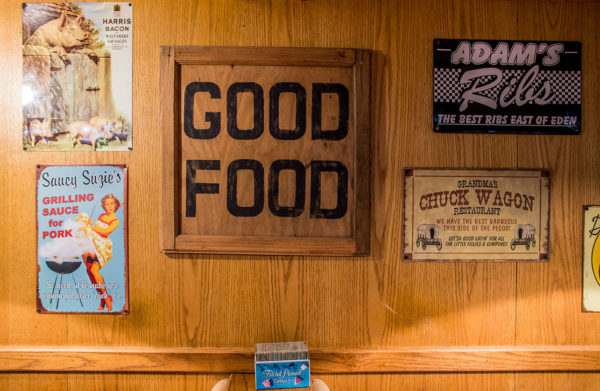I met a friend for dinner recently at a new Italian restaurant that was getting a lot of buzz. When we arrived for an early reservation, the bar was full and the decor was predictably minimalist and modern. It was the kind of restaurant that made you feel like you’ve been there before even though you hadn’t. The silhouettes in the bar area made it almost impossible to read the tiny font of the menu. Maybe it was the shadowy light, but the cocktail glasses looked sad and shrunken, struggling mightily to make a two-ounce pour look generous.
Delicate handmade pastas were flying out of the kitchen while we sipped on our Campari-less Negronis and waited for our meal to begin. We were surrounded on all sides by privileged millennials slugging back overpriced Rosé. As the parade of delicious pastas arrived to our table—Vongole, Ravioli, Rabbit Ragú—there was a sameness about the whole affair that didn’t feel as special as it did twenty years ago when nobody knew what the hell burrata was and everyone thought salumi was a misspelling. The food was good, but it felt like a meal I’d eaten a hundred times before.
Americans used to be ignorant about food. We’re still ignorant about many things—politics, climate change, soccer—but not about food anymore. Our newfound worldliness is a blessing and a curse. We expect more from restaurants but it takes more to satisfy us. Cooking comfort food has become too comfortable.

This puts chefs in a difficult predicament. Delighting guests that are more food literate can cause restaurants to prioritize innovation over flavor. As they push harder for new discoveries, their kitchens become more experimental but they inevitably function more like sterile laboratories than as incubators for culinary creativity.
Satisfying more discerning guests also puts undue pressure on the front-of-the-house to entertain. Staying out of guests’ way used to be a feature of attentive service, now it may be perceived as negligence. Table-side shtick makes service feel more like busking, unapologetically drenching guests in manufactured charm lest anyone forget to leave cash in the guitar case on their way out.
I recently dined at a new restaurant reinforced these ideas. The food was quite good and the kitchen hit all its marks, but it felt uninspired somehow. The obligatory Sashimi style raw fish appetizer—stripped naked of its Asian roots—was Anglicized and safe. The compulsory pan-seared rhombus of farm-raised white fish sounded as fresh as a bottle of Santa Margherita Pinot Grigio in the early 90’s. A vegetarian dish, blatantly pandering, headlined the entrees but even vegetarians would probably swipe left on its predictable presentation.
Many articles have appeared lately about the “New Nostalgia” that has seen the resurrection of relics of America’s culinary past like the gaudy pomp and circumstance of Chrome trolleys carrying Prime Rib and Flinstonian slabs of Chateaubriand buttered up and sizzling on Mauviel copper pans. It would seem that once certain chefs run out of fertile new ideas or futuristic flavor combinations, nostalgic cooking becomes a convenient style to fallback on.
Perhaps some diners, too, long for the days when chefs didn’t exist to challenge our palates; they were there to simply feed us. There will always be a segment of the population that wishes we could “Make Restaurants Great Again.” But as with American politics in the Trump Era, yearning for yesteryear causes us to build more walls than bridges and too easily forget just how far we’ve come.

